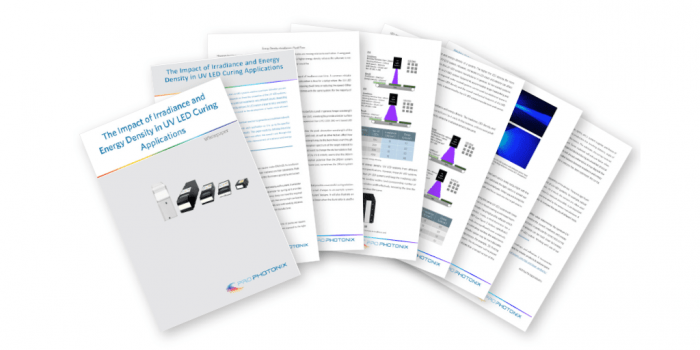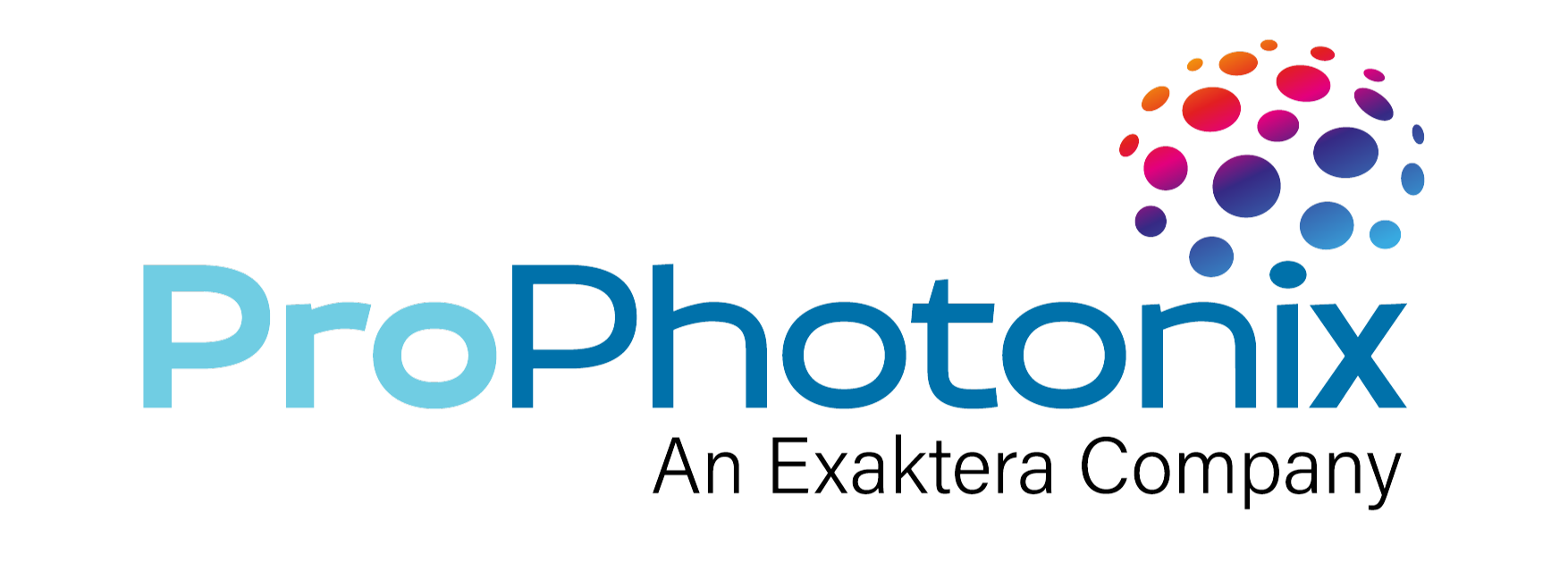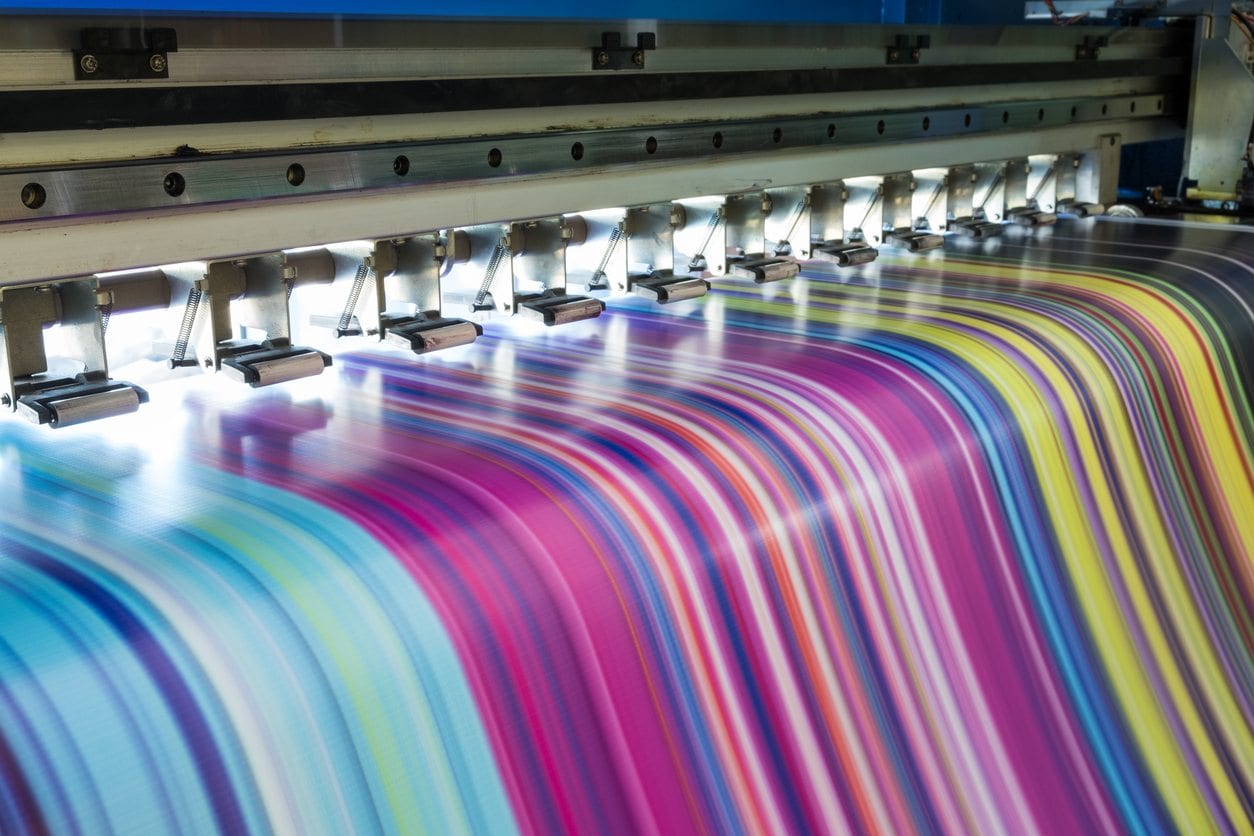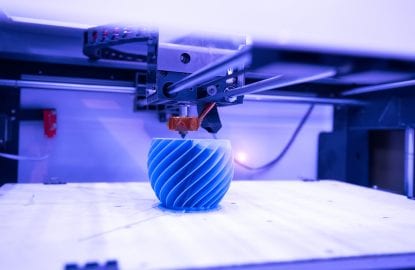Whether you are curing an ink, coating, polymer, or adhesive, the quality of the UV cured material will be substantially affected by the UV LED systems used to cure them. The end product depends on three key properties of the UV LED systems: wavelength, irradiance, and energy density.
This post provides an overview of Irradiance and Energy Density (Dose) in UV Curing applications. For more detailed information, download our new whitepaper “The Impact of Irradiance and Energy Density in UV LED Curing Applications” here.
What is Irradiance?
Irradiance is defined as the total radiant power per unit area [W/m2]. Irradiance will vary slightly across a cure surface and UV LED curing system manufacturers will typically quote peak irradiance (the point of maximum irradiance) for their products.
What is Energy Density?
Energy Density (often referred to as dose) is measured in units of joules per square centimeter and defined as the irradiance received for a specific time.
UV LED System Design
In practice, it is the combination of both irradiance and energy density working together that provides a successful curing solution. The new whitepaper examines the relationship between irradiance and dose through small changes to an example system to help to explain the differences in specifications between UV LED system manufacturers’ designs. It examines UV LED System window width, dwell time, working distance, and irradiance and energy density limitations as well as the measurement of irradiance and energy density.

New Whitepaper: “The Impact of Irradiance and Energy Density in UV LED Curing Applications”
With more than 15 years of experience in UV LED Systems, ProPhotonix has recently released a whitepaper examining the Impact of Irradiance and Energy Density in UV LED Curing Applications. To learn more about irradiance and energy density, download the whitepaper.



